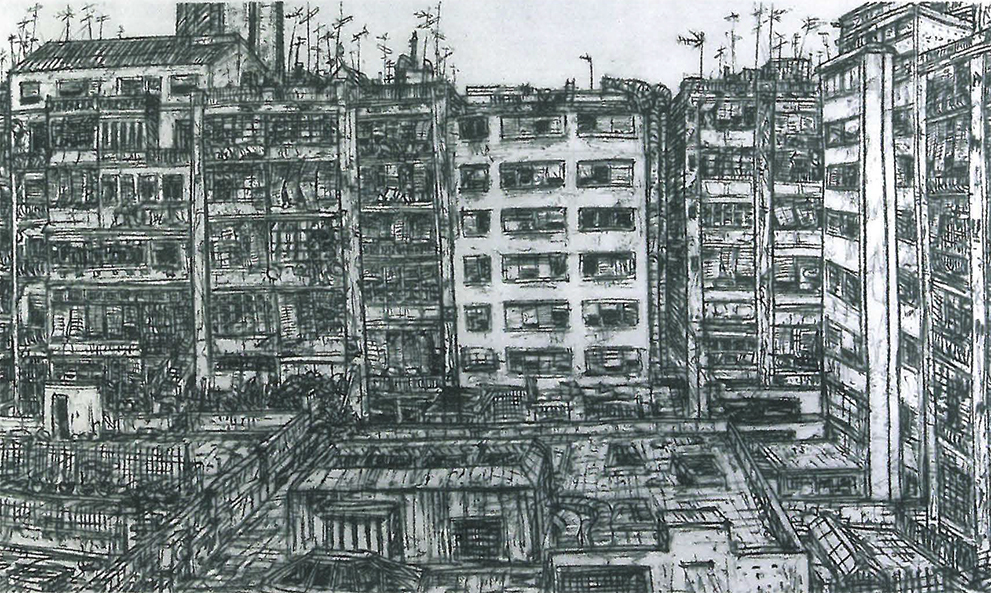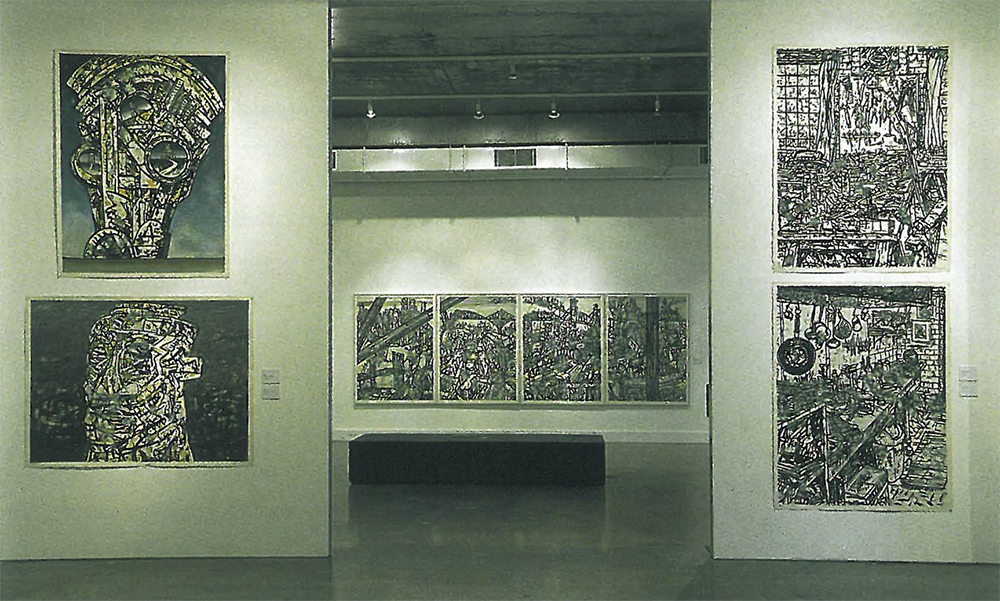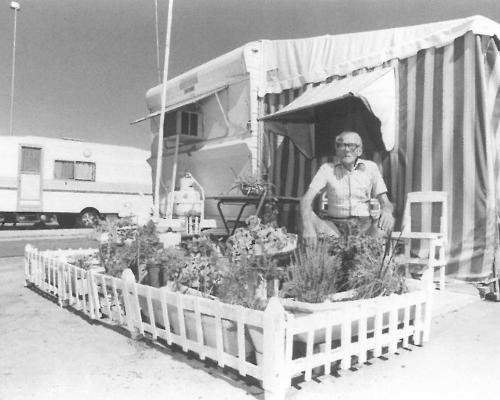
Evidence of Jan Senbergs' beginnings as a printmaker is seen clearly in this show in the bold mark-making on paper reminiscent of woodblock and lino printing. The drawings hark back to an earlier period where artists were trained to observe the world in detail and render with their own hand what they saw. Though it is clear that he sees the world through the eyes of a painter, relating it back to us through the physical process of drawing and painting. Senberg's work engages a haptic pleasure almost forbidden in our current art context where expressive painting and drawing seem to have been superseded by cleanly considered paintings as design objects, or video and digital art media which rely strongly on hand, eye and head, leaving the rest of the body redundant.
Apparently, whenever Senbergs travels to a new place he begins his studio work by drawing what he observes around him as a way of warming up to painting. These drawings are ordinarily on a large scale made using dark oilstick or pastel. The content varies from interior drawings as in Section – Studio; views from windows such as Eixample Quadrangle: View from the Australia Council Studio – Barcelona; objects he finds like the Quito Man sculpture or images that attract his attention on the street. Through this process of drawing he has developed a personal structure and method for engagement with unfamiliar places. By drawing what he sees around him without judgement or passion he seems to open up a space for his own contemplation. Many of the drawings in this show were created as a way of getting started and settling down to work.
By no means a postmodern painter Senbergs is a detached observer who images in his paintings a personal reaction to the predicament of modern man isolated and alienated within contemporary society. Support Doubt, the painting that most poignantly suggests this for me, shows a crowd of protesters in the foreground carrying a banner reading 'support doubt', while the city seems to roll back behind them obliterating the countryside – a simple plea for the idea of community.
The visual chaos in the works is often of architectonic proportions. As in Barcelona, distorted perspectives create a sense of vertigo, or as Ted Gott says in his catalogue essay his city works can read like 'medieval town maps.' In this show images detailing the clutter of domestic life are contrasted with more symbolic, poetic and dreamlike images such as Taken, in which a reverse Icarus figure, a bird with human legs, is swept up into the heavens.

Looking at these monumental works in the gallery it becomes clear that Senbergs' painterly concerns refer back to a pre-digital age where the 'enemy' to community was tangible and often represented in art by visual allusions to industry. Here we find Senbergs' drawing Kembla Icon and Newcastle hinting at the past power of the industrial complex through juxtaposition with our current knowledge of the decline of these same industries. What are the new visual metaphors for power in the twenty-first century in which the machinations of the digital are almost invisible? It seems the conceptual leap from the industrial to the digital has thrust Western society into isolating the individual into a spiralling interest in the material.
It is true that in the light of current trends – the privileging of formalist abstraction in Melbourne painting, the shift towards new media and the enthusiasm for youth culture – this show looks old-fashioned. But the question is whether anything can be gained from seeing a show that falls outside current trends. Definitely. Not only is it a testament to the tenacity of the artist and his commitment to his vision, it is a reminder of a humanist sensibility that informed the training and philosophical outlook of previous generations of artists. The fact that it is being exhibited in a university gallery also gives students of art and design an opportunity to experience the haptic and expressive qualities of this style of drawing first hand.
These works, because of their scale and graphic intensity implicitly contain a physical energy and the taste of sweat. The title Long Arm Drawing suggests there are still ways of thinking differently about the individual in society. It also begs us to question the reason we are so keen to take up new technology and quick to make other ways of story-telling redundant.












